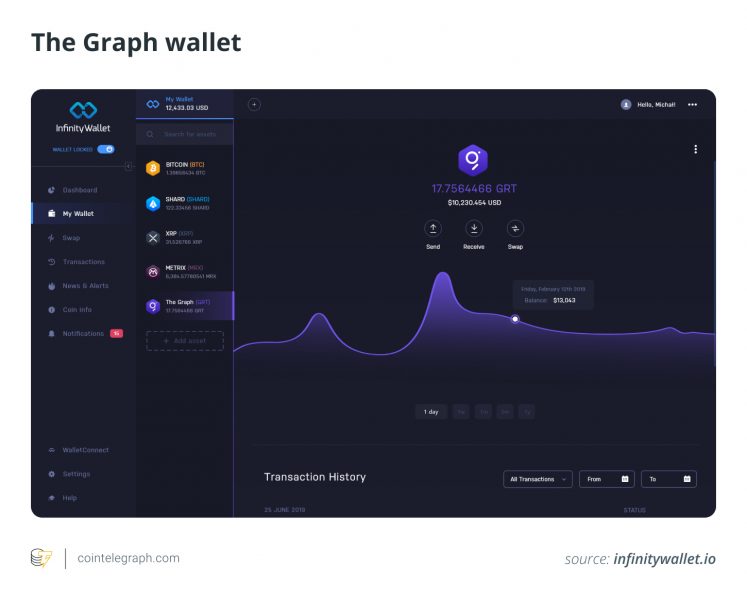What is The Graph (GRT) cryptocurrency?
The Graph is a decentralized indexing system that allows users to query data from blockchain networks, making DApp development easier.
The Graph is an open-source protocol hosted on the Ethereum blockchain, designed for indexing and querying, much like Google. It collects, organizes and stores data from other blockchains, making it searchable by users.
Using The Graph enables developers to quickly access and analyze data from blockchain networks, making decentralized applications (DApps) easier to build. GRT is The Graph’s native currency, which users pay to make queries.
The Graph’s decentralized indexing protocol uses open-source application programming interfaces (APIs) known as subgraphs, indexes that organize data within a global blockchain graph according to a user’s query.
The subgraphs are transferable, allowing developers to use GraphQL (the language used by The Graph) to query data quickly and efficiently. The Graph’s decentralized network is powered by blockchain technology, a distributed ledger system that enables secure and transparent transactions.
By providing a streamlined interface for developers to access and query data stored on decentralized networks that are not easy to query directly, The Graph is helping to speed up the creation of DApps on that network.
One of The Graph’s use cases is in the growing field of decentralized finance (DeFi). It improves developers’ access to the blockchain network data used in DeFi applications.
Users can also utilize the GRT to create nonfungible tokens (NFTs), one-of-a-kind digital assets maintained in blockchain systems. By streamlining developer access to this data, The Graph promotes the development of NFT marketplaces and other NFT-related apps.





